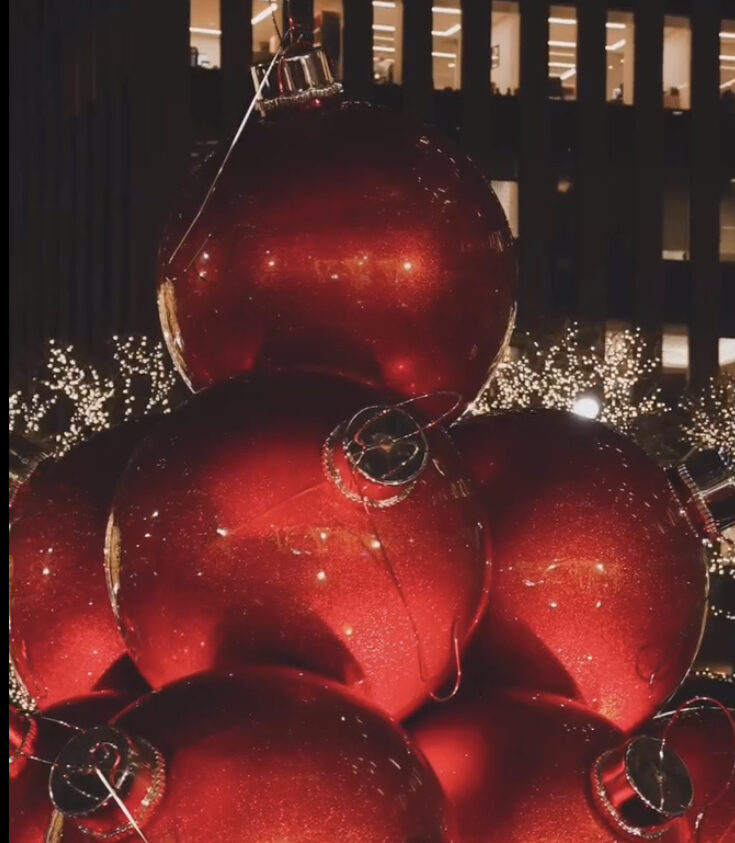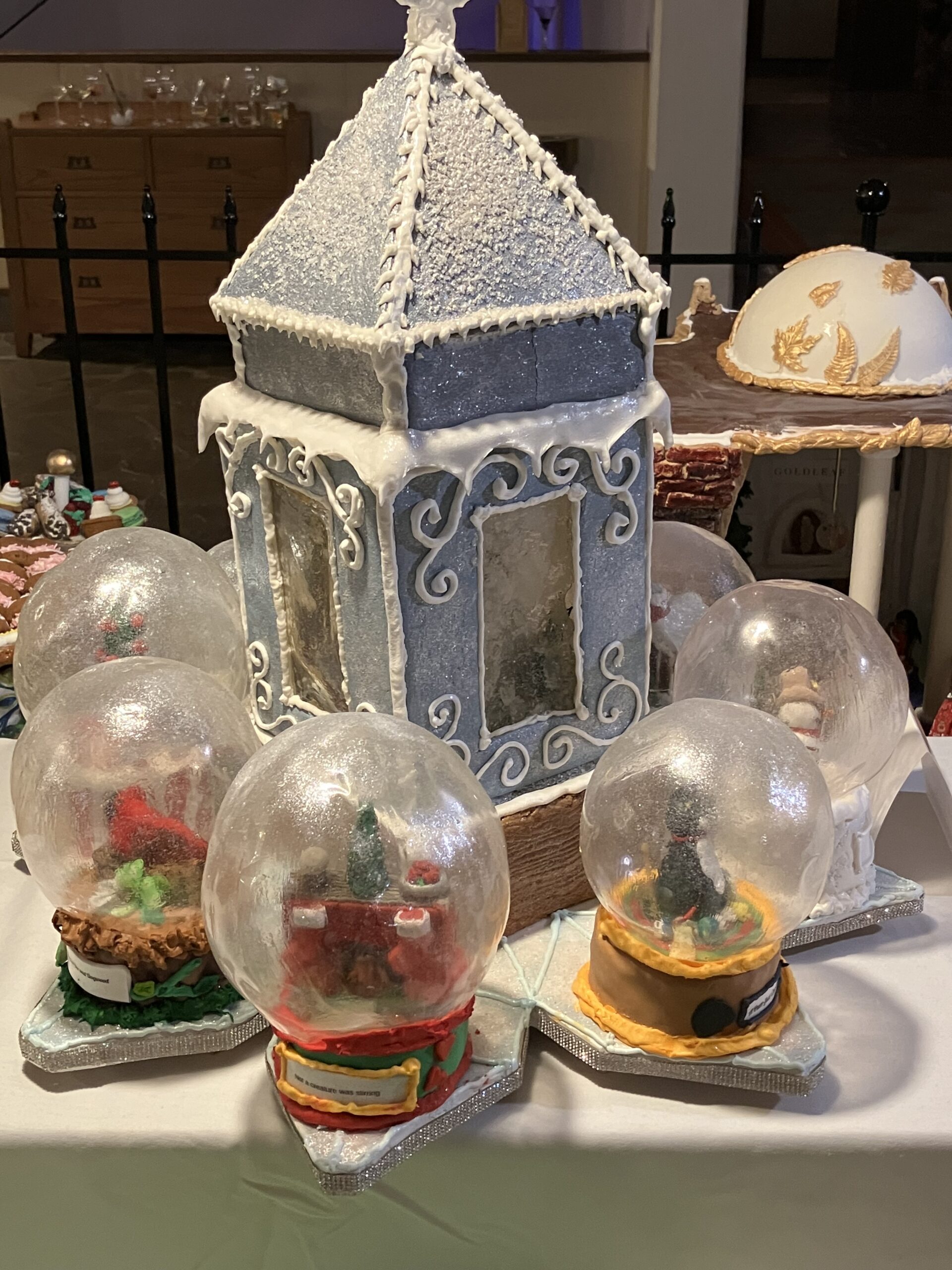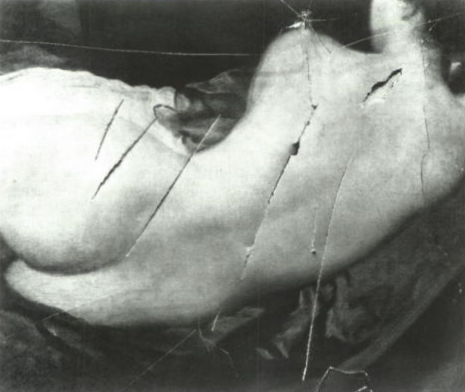by Amineddoleh & Associates LLC | Jan 24, 2024 |
What’s in a name? According to Banksy, quite a lot.
Banksy, the elusive and mysterious street artist, has retitled and redated a famous painting – for the second time.

Girl with Balloon (2006) by Banksy. Image via ArtNet.
The artist first renamed the work (originally called Girl with Balloon, 2006) in 2018, after it went through the shredder during a live auction – to the shock of those present in the crowd (unbelievers are welcome to watch the Youtube footage of the event, in case they missed it. Of particular hilarity is the auctioneer calling for everyone’s “attention” at the close of the footage, in an incredibly kind, polite and posh British accent).
It was a shocking moment, and one that caused a significant stir in the art world. However, Banksy was not done and continued to surprise the industry. Post-transformation, the artist (who remains anonymous) announced through the studio Pest Control that the work was now called (appropriately) Love is in the Bin, and given a new date (2018). The reason? According to Banksy, the intentional modification of the original work produced an entirely new piece.
What of the half-destroyed piece? Sotheby’s was in a bit of a pickle, as the work had been sold prior to going through the shredder. The auction house issued a brand-new certificate of authenticity with the new title. Next, in a moment of breathtaking diplomacy, Sotheby’s managed to sell the half-destroyed work to the original purchaser. Sotheby’s convinced the buyer to go through with the one million dollar sale (plus fees), and heaved a huge collective sigh of relief. The art world accepted the change and the new work as a product of Banksy’s unpredictable creativity and whimsy.

The half-destroyed work. Previously entitled Love is in the Bin (2018). Image via DW.
The Second Change
Years later, in October 2021, Love is in the Bin returned to auction at Sotheby’s. After selling for upwards of $25 million, the work underwent its second re-titling. The piece is now called Girl without Balloon and dated 2021.
Type-A personalities among us may wonder: is this allowed? Do artists have the power to revisit, rename, and re-date works after they enter the market? Surprisingly, the answer is yes. Artists have legal rights – called moral rights – which protect (among other things) artists’ rights of attribution and integrity. Moral rights are principally given through the Visual Artists Rights Act (VARA) (17 U.S.C. Sec. 101, 106A, 113, 301) and cover the non-economic aspects of artist rights.
Artists’ Moral Rights
The right of attribution (one of the four moral rights of artists included in the statute) gives artists the right to have their names attached to works they have created. Additionally, this right prevents the names of others who did not create the work from being attached to the piece. In Banksy’s case, this right came into play during the intentional partial shredding of the work at auction. Banksy directed the shredding, and then stated that the shredding produced an entirely new artwork – which he also created, vis-à-vis the art handlers at Sotheby’s.
A second important right included in the moral rights of artists is the right of integrity. The right of integrity gives the artists exclusive right to prevent the destruction or modification of work by others. Note that the prohibition is against changes to the work by others – the artist maintains the right to revisit and modify a work at any time (even if, at some earlier point, the artist had treated the work as finished). A modification arguably includes the title and date of a work.

Girl without Balloon by Banksy (2021). Image via NPR.
Where Do Banksy’s Title Changes Fit In?
Our founder, Leila, was interviewed on this very subject in 2015, regarding a piece by Frida Kahlo. When asked about the significance of a work’s title, in relation to an artist’s moral right of integrity, Leila stated:
“A title is a significant piece of a work. [Think] about Duchamp’s ‘Fountain.’ He took a urinal and named it a fountain, and then said it was a piece of art. It was just because he gave it a title and put it in a different context that changed the work in itself, and titles do have the ability to transform a work.” (Emphasis added).
Leila, along with other respected legal scholars, explains that the value of moral rights – such as the right of attribution and the right of integrity – is non-economic. Instead, moral rights encompass the rights of artists that stem from their artistic personas – their personality, style, creativity, whimsy, and studio brand. By protecting artist’s carefully constructed “personas”, the moral rights of artists act as a legal shield for the non-economic components of an artist’s body of work.
The result? Banksy is well within his moral rights as an artist to rename the piece. Banksy’s modifications and transformations of his piece – both physical and titular – reflect the ingenuity and creativity of this astonishing, mysterious artist.
Will the piece undergo another name change, and be given a new date? It’s anyone’s guess. For now, the piece is called Girl without Balloon (2021). But, that could change. As Shakespeare wrote, “We know what we are, but know not what we may be.”
by Amineddoleh & Associates LLC | Jan 23, 2024 |
Our firm is thrilled that this is Master Drawing New York’s (MDNY’s) first year with our client, Christopher Bishop Fine Art, at the helm. This highly-anticipated, week-long event is the premiere art exhibition of works on paper in the United States. Over two dozen galleries on the Upper East Side will feature rare and exquisite works on paper, in addition to some paintings, sculptures, and photographic works. The selected works range in date, with some pieces dating back to the 15th century.

Brochure cover for MDNY 2024. Image via Master Drawings New York.
Those who wish to walk the entire show (despite forecasts for rainy weather) will find that they easily meet their step-goals for the day – MDNY stretches 40 city blocks. In addition to the various exhibitions spanning the fair, several events and lectures will take place in different locations throughout the week. Those interested in attending should be sure to pick up an exhibitor map and calendar at one of several spots in the city, lest they miss out on an exclusive, once-in-a-lifetime event.
Highlights
One of the highlights of the fair comes from our very own client. Christopher Bishop Fine Art will exhibit The Pharoah’s Judgment, an exceptionally rare Spanish drawing discovered at auction in early 2023. The 16th century drawing contains tiny pin pricks throughout the pattern of the drawing. These pin pricks indicate that the pattern was replicated on ecclesiastical garments. MDNY has chosen to exhibit this work in a double-sided frame, in order to best showcase how the maker of the drawing collaborated with the embroiderers on the finished garments.This gives viewers a fascinating inside-look into artist collaborations in the 16th century.
Spirit of Partnership
Speaking of collaborations, this year marks the start of a new, great one. MDNY is partnering with The Drawing Foundation, a New York-based not-for-profit organization whose mission is to advance knowledge and scholarship about drawings. The Drawing Foundation establishes this goal through collaborations with various partners around the world. Our firm applauds MDNY, and, by extension, Christopher Bishop Fine Art, for engaging in this fresh collaboration with The Drawing Foundation. The partnership is sure to foster the newest generation of scholars, students, curators, and appreciators of artistic works on paper.
Collaboration – among artists, galleries, collectors, and audiences – hits at the heart of MDNY itself. The events this week are not to be missed, not only because they are a chance to experience gorgeous art, but because they present an opportunity for the international art community to come together in scholarship and art appreciation.
No one says it better than Christopher Bishop. “All of us who work with drawings — museums, dealers, collectors, and historians alike — are invested in seeing that the joy of the study of drawings is passed on to new generations. This can only be done by knitting the community together ever more strongly and introducing new audiences to the fair.”
by Amineddoleh & Associates LLC | Jan 5, 2024 |
Sotheby’s has had a rocky start to 2024 . The New York Times reports that the auction house is preparing to defend itself in trial next week, in the most high-profile lawsuit the art world has seen since in over a decade.

One of the works Rybololev purchased. Tête by Modigliani. Image via Sotheby’s.com.
Facts of the Case
A Russian oligarch, Dmitry Ryboloblev, is accusing Sotheby’s of aiding in fraud. The trial is based on transactions Sotheby’s oversaw between Rybolobev and a dealer/advisor named Yves Bouvier. Bouvier has been accused of secretly acting as both an art dealer and owner of works he sold to Rybolobev, while Bouvier also represented himself as an art advisor. According to Ryboloblev, playing multiple roles enabled Bouvier to dramatically inflate the estimated value of any art sold, and pocket the difference.
Sotheby’s has been accused of helping Bouvier in his deception. The auction house has been accused of knowing that Bouvier lied to Rybolobev about the price of the artwork that Bouvier paid for it, and then helping Bouvier to adjust the work’s valuation accordingly. It will be difficult to prove that Sotheby’s knew that Bouvier was lying to his client, Rybolovlev. However, the evidence presented at trial could convince a jury that Sotheby’s representatives knew Bouvier was inflating the estimated value of the artwork being sold.
The most damning evidence is (as it always is) found in the digital breadcrumbs: certain emails admitted into evidence indicate that Sotheby’s representatives might have altered their valuations based on Bouvier’s instructions –allowing them to both profit from the difference.
Founder Sought as Expert Voice
The lawsuit may expose some of the secrecy behind the world’s most expensive art dealings, primarily because it involves a jury trial. The entire art world is abuzz with intrigue about the trial, and our founder, Leila, was sought out as an expert voice on this incredibly hot topic.
Leila was quoted in The New York Times, stating “There is so much secrecy in the art world that buyers sometimes don’t know the amount of money being made by others in transactions. . . this case will help to clarify the responsibilities and fiduciary duties owed to clients by dealers and auction houses.”
Anonymity in the Art Market
Our firm previously wrote about the issues stemming from anonymity in the art market here. This new case is expected to further increase transparency around those issues in the art market. It asks difficult questions about where loyalties lie when expectations become blurred and prices shoot sky-high. Another outcome for this trial could be fewer money-laundering schemes hidden in art transactions, because more transparency would give bad actors fewer places to hide.
No matter how this case ends, this trial will be one to watch: it has the potential to initiate a complete overhaul of centuries-old industry practices for art buyers, sellers, auction houses, and dealers around the world.
by Amineddoleh & Associates LLC | Dec 10, 2023 |
In our annual holiday newsletter, Amineddoleh & Associates is pleased to share some of the major developments that took place at our firm and in the art market during 2023. We had a banner year, as we were grateful to work with many returning clients, as well as new ones, including museums, collectors, galleries, artists, and entrepreneurs. We are pleased to share some holiday JOY from us to you.

Grand Central Station. Image courtesy of NannFilms, used with permission.
CLIENTS AND REPRESENTATIVE MATTERS
Hiroshi Sugimoto’s Point of Infinity
Our firm proudly announced the public art unveiling of our esteemed client Hiroshi Sugimoto’s Point of Infinity. The gravity-defying sculpture maintains an optical illusion that the two points of the work will (eventually, even if only in the viewer’s minds’ eye) meet. It is a testament to the genius of Sugimoto as an artistic force. Read more here.
Client Acquires Master Drawings in New York
We proudly represented our client Christopher Bishop and his eponymous Christopher Bishop Fine Art in the acquisition of the art fair Master Drawings in New York. The fair, held annually in January in New York City, focuses on works on paper and features several important galleries, as well as programs with leading institutions. Interested in attending the 2024 event? Mark your calendars for opening day on January 27th. Read more here.
Client Opens New Gallery Space
Our firm was pleased to work with Atamian-Hovsepian Curatorial Practice as it transitioned from freelance curating to unveiling its own inaugural gallery and exhibition space in New York City, focusing on underrepresented artists.
Antiquities Restitutions
Amineddoleh & Associates was involved in a number of cultural heritage restitutions this year, including the return of a valuable marble statue to its country of origin and the return of a collection of historic artifacts to their home overseas.

Snow-covered cabin. Artwork courtesy of Justin Leitner, used with permission.
ART & IP NEWS
One thing we love about the art market is that there is always something unexpected and exciting happening in the art world. Read on for a glimpse at some of our most popular blog posts this past year.
Commercialism v. Transformativeness
In this blog post, our firm examined shifts in copyright law following the decision in Andy Warhol Foundation for the Visual Arts, Inc. v. Goldsmith, et al. This highly-anticipated Supreme Court decision involved application of the fair use test (a test used to determine whether the use of a copyrighted work may be used without permission) to a case with peculiar facts: a photographer (Goldsmith) provided a limited license through Vanity Fair that allowed another artist (Warhol) to use her photograph to create a silkscreen work. Warhol violated the terms of the license, and trouble ensued. Legal scholars hoped that the decision would provide clarification on the test. Unfortunately, the high court’s opinion did not provide much guidance. Curious as to why? Read more here.
Wise Women in Art & Entrepreneurship
Ever wonder where all the great women artists were in your art history lectures? At Amineddoleh & Assoc., we did, too. In honor of International Women’s Day, our firm took a closer look at some of the most talented and undercelebrated women artists in history. We also highlighted our friends at Building 180 – a standout, full-service global art production and consulting agency filling the gap between artists and businesses to create public and private art installations. Read more on our website.
Armenian Cultural Heritage at Risk
Our firm took an exclusive look at the Armenian cultural heritage at risk due to aggression from the Azerbaijani regime. The exodus of Armenians and Azerbaijan’s occupation of Artsakh left Armenian art and architecture unprotected. Artsakh is known as the “Crown Jewel” of Armenian cultural heritage, as it contains some of the most exemplary representations of medieval Armenian architecture, as well as important sites such as the first school to teach the Armenian alphabet in the early fifth century. Also in this post, our firm highlighted the new legal pathway the Republic of Armenia paved when seeking assistance from international courts to help protect their treasures. Read more here.

Christmas ornaments on 6th Ave. Image courtesy of NannFilms, used with permission.
LAW FIRM UPDATES AND EVENTS
Firm Founder Listed Again by Chambers
For the second consecutive year, firm founder Leila A. Amineddoleh was recognized by Chambers and Partners High Net Worth Guide for her work in Art and Cultural Property Law. The publication named Leila as an attorney who has “a lot of expertise in the cultural property space,” with “a great courtroom manner.” The publication also remarked on her active presence in the art law space and her work in the litigation area. Read more here. Leila was also named one of the “Top 10 Most Influential Art and Cultural Property Law Lawyers in 2023” by Business Today. For that award, Leila was selected for her “unique touch of fervor to her work, combined with a comprehensive understanding of art law.” Read more about that award here.
Art Law Conferences
Congratulations to our firm’s founder Leila A. Amineddoleh, who successfully chaired the 15th Annual NYCLA Art Law Institute, one of the most anticipated events of the year. Leila also moderated a fascinating panel during the event entitled “Broken Promises: Promised Gifts and Legal Enforceability.” A major theme in the panel was for lawyers to be extremely aware of the time between the time the gift was made, and the time the gift is executed (word to the wise: things can change!).
Yelena Ambartsumian gave a presentation at the conference with Claudia Quinones, one of our former associates (and current friend). The two gave thoughtful insight and wisdom on issues surrounding title and authenticity.

Santa Con NYC in Central Park. Image courtesy of Nycmstar, used with permission.
IN THE PRESS
Leila appeared in the Washington Post and in an article for ABC News this year, in addition to other notable publications. In each, she was consulted as an expert voice on a variety of art and cultural heritage law topics, including discussions on the ethical implications of resolving cultural antiquities ownership disputes.
Additionally, Leila was invited to contribute to the Third Edition of The Art Law Review. Her article, “Cultural Heritage Disputes and Restitution” examines Nazi-looted art disputes, antiquities litigations, government seizures, and ethical concerns related to the acquisition and display of Colonial-era takings. Read more here. Another of Leila’s scholarly publications, “Kings, Treasures, and Looting: The Evolution of Sovereign Immunity and the Foreign Sovereign Immunities Act,” was published in the Columbia Journal of Law & the Arts. Read more here.

Christmas tree at Rockefeller Center. Image courtesy of NannFilms, used with permission.
Leila also was featured in New York Metro Super Lawyers Magazine as a leader in her field. For the article, Leila’s was highlighted as an exemplary, top-rated intellectual property, art, and cultural heritage lawyer well-known in the industry for getting the job done right. Read more here. Leila was also the feature story in Boston College Magazine’s Winter 2023 issue. The story followed Leila’s art law career along with the story of the looted marble bust that was restituted to Germany in 2022. Read more here.
Maria T. Cannon contributed several letters to the Wall Street Journal this past year on AI and the ethical implications of attorneys and artists. She was also published in the ABA’s Art & Cultural Heritage Law Newsletter, Spring 2023 Edition. You can read it here. She also presented two lectures this past year. The first was in Asheville, NC, about the challenges attorneys face when dealing with celebrity-inspired art. Read more here. The second was at Cardinal Gibbons High School on Nazi-looted art. Finally, she completed Artificial Intelligence Governance Professional training through internationally-recognized leader in privacy, information, and cybersecurity law, IAPP.

White birch forest. Artwork courtesy of Justin Leitner, used with permission.
On behalf of Amineddoleh & Associates, we wish you a happy and healthy holiday season and a wonderful and prosperous new year.
P.S. Click here for one last special holiday message from our firm!
by Amineddoleh & Associates LLC | Dec 7, 2023 |
It’s official – The Gingerbread City has come to New York.

The Gingerbread City’s futuristic cityscape. Image via The Seaport.
Residents of FiDi are already in-the-know and can reportedly smell the cookie houses throughout their neighborhood. A miniature city of futuristic houses entirely constructed of gingerbread and candy is on display at the Seaport – with gingerbread baked courtesy of Balthazar. These professionally-built cityscapes are easily mistaken for pricey works of art. Premier architectural minds used their applied their training to produce a verifiable wonderland of delicious fun.
Those wandering the candy-cane lanes at The Gingerbread City in NYC may wonder where all of this gingerbread madness started – and when the qualifications for a “good” gingerbread house maker suddenly amounted to the same as those required of a minor Renaissance master.
Gingerbread houses are not a new phenomenon, but the artistry behind them is a modern cultural trend. The earliest villages of cookie-built houses originated in Germany, inspired by fairytales.
History of Gingerbread Houses
Remember the story of Hansel and Gretel? Apart from being a harrowing tale told to young children (teaching kids to – above all – never leave crumbs on the floor), the story is supposedly responsible for candy-constructed houses. The original 1880s fairytale reads: “When they [Hansel and Gretel] came nearer, they saw that the house was built of bread, and roofed with cakes, and the window was of transparent sugar.” Alternate translations referred to the “bread” as “gingerbread.” This was great news for German bakers, who were already well-versed in the art of lebkuchen, or “spiced-honey biscuit”-making. They took the Grimms’ cue and ran with it, creating delectable confections of miniature houses with cookie walls, held together by frosting.

Hansel and Gretel. Image via A Child’s Book of Stories (1911), public domain.
Centuries later, bakers around the world still construct houses that look (and usually are) good enough to eat. However, in modern times, yearly competitions have raised the stakes. Take, for example, the Annual National Gingerbread House Contest at Asheville, NC’s Grove Park Inn. That nation-wide conference culminates in a display of hundreds of incredibly detailed and awe-inspiring works of culinary magic. Each house is more than a cobble of cookies and candy – it is a work of art.
Modern Bakers Take the Cake
To come out on top at the Grove Park Inn, contestants must go beyond the traditional gingerbread house. Instead, winners in each category shine with their originality and ingenuity. This past year, judges mulled over 200 entries from twenty-two states and Guatemala to choose the winners. Adult, teens, youth and children battled in out in the sweetest battle outside of Cupcake Wars. Winners walked away with more than just bragging rights. At the end of the day, over $40,000 in cash and prizes was up for grabs.

A traditional gingerbread house. image courtesy of Marit & Toomas Hinnosaar via Wikimedia Commons.
Entrants were scored on metrics appropriate to the task at hand. These includes “Best Use of Color,” “Best Use of Sprinkles,” “Most Unique Ingredient,” “Pop Culture Star,” “Most Innovative Structure,” and “Longest Standing Competitor.” Each gingerbread house was required to be constructed of 5% gingerbread and be 100% edible – no small feat, considering the vast majority of these houses looked like they came out of an artist’s studio, not a kitchen.
Skeptical? Just consider this year’s grand-prize winner – a mini Indonesian-inspired dwelling entitled “Christmas at the Tonkonan” built by an aunt-and-niece duo. The breathtaking piece includes a lattice room, palm fronds, detailed “woodwork”, and tiny home-dwellers – ready to celebrate the holiday of their little lifetimes.

A snow globe themed entry at the 31st Annual National Gingerbread House Competition hosted by the Omni Grove Park. Image courtesy of Maria Cannon, used with permission.
The houses at the Grove Park – while unbelievably beautiful – do stray from the traditional gingerbread house form. Those looking for a more traditional (yet still impressive) way to whet their gingerbread house appetite this year can look no further than the life-size gingerbread house at the Fairmont Hotel in San Francisco.
Life-Size Gingerbread House
It’s true – not only is the Fairmont the former haunt of famed San Franciscan artist Leroy Neiman (who was known to doodle on menus while waiting to be served at tea), it is also the West Coast’s Christmas Central.
Dubbed “Festive Holidays at the Fairmont,” guests can enjoy all sorts of holiday hoopla. However, the real stunner is the life-size gingerbread house in the lobby. Constructed of hundreds of bricks made by staff pastry chefs, this house is the one all the gingerbread men on the block are clamoring to move into. (You thought the New York housing market was rough? Try finding real estate fit for life as a cookie.)

Life-size gingerbread house at the Fairmont Hotel in San Francisco. Image via Fairmont San Francisco.
At the Fairmont, the gingerbread house is not for sale – and no prizes are awarded – but lucky guests may score the chance to tour the inside of the house. Jury’s out as to whether anyone has actually been brave enough to take a bite out of the walls while on the private tour, but hotel staff claims that they have seen guests pawing at the pounds of See’s Candies adorning the windowsills.
Gingerbread Decorating Is The New Culinary Art
Whether big or small, the culinary confections bakers are turning out this time of year deserve our appreciation and recognition. The time, talent, and craft that is required to decorate houses of this detail and magnitude is nothing short of artistic genius. In fact, according to the Culinary Institute of America (CIA), art courses are now a required component of educational programs for master pastry chefs. The class is called “Principles of Design” and the syllabus reads like it’s straight out of Parsons – students learn how to shade, combine colors, plan, sketch and create art across multiple media.
Other modern artists and designers have taken this as a cue to apply their skills (honed in traditional artistic settings) to the art of pastry decorating, including gingerbread house making. Last year, designer Kelly Wearstler and Richard Christiansen (owner of the luxe Flamingo Estate) collaborated with Balthazar’s pastry chef, Mark Tasker, to create a limited-edition gingerbread house offering. Only 100 houses were produced, and proceeds from the (substantial) sales price went to Structure, a charitable initiative that helps communities rebuild sustainable houses after natural disasters.

Kelly Wearstler’s gingerbread creation. Image via Flamingo Estate.
The unique house – done in Kelly Wearstler’s signature California Modernist style – looked like it belonged in California in the 1940s. The innovative design featured a checked exterior and clean, architectural lines. In short, it was iconic and bold, and lived up to the hype of her stated intention prior to starting the project, which was to “build a type of gingerbread house [she and Christiansen] would actually like to live in.”
Wearstler’s design, combined with Tasker’s skill as a baker, fueled holiday magic in the most delicious of forms. The pair created art fit for auction at Sotheby’s, or for display in any art museum in New York or L.A.. Wearstler found the process so intriguing and inspiring from a design perspective that she applauded the gingerbread base as being “the ideal canvas” for her vision to take shape.
At this time of year, and especially in the face of the modern political, economical, and environmental crises impacting our communities, there is something so valuable about the act of taking time to experience art in all its festive forms. For gingerbread house artists, the entire process is akin to artistic masters hard at work in-studio. Here’s to the gingerbread house bakers – the amateur and the masters – who bring us all to stop and wonder at their art of baking.
Want to try your own hand at baking a gingerbread house? Click here for King Arthur Baking’s “construction gingerbread” recipe.
Rather buy your own, already-crafted work of edible art? Look no further than Solvang Bakery‘s creations.
by Amineddoleh & Associates LLC | Nov 6, 2023 |
Monday morning did not come easily for art lovers this week. Heartbreaking news broke early Monday that the glass to the infamous Rokeby Venus by Diego Velazquez was intentionally smashed. The culprits were taking part in a climate protest organized by Just Stop Oil (“JSO”).
Our firm wrote about JSO’s past string of protests here. We also have written about the mysterious Rokeby Venus – and its purported ability to drive viewers mad – here. Check both posts out to obtain context for this recent attack.

The slashed Rokeby Venus. Image via artinsociety.com.
It is odd that the painting at the heart of this strange, unsound attack was the alluring Rokeby Venus. Perhaps the same mysterious, deluded forces that have caused past owners and viewers to lose their faculties were at play?
JSO states that this piece was specifically selected – but not for its superstitions. Instead, JSO claims an arguably logical connection for choosing this painting for destruction. As JSO explained in a public statement on Nov.6th, “Women did not get the vote by voting [reference the 1914 attack by women’s rights activist Mary Richardson], it is time for deeds not words.”
JSO continued: “It is time to Just Stop Oil. Politics is failing us. It failed women in 1914 and it is failing us now. New oil and gas will kill millions. If we love art, if we love life, if we love our families, we must Just Stop Oil.”

JSO climate protestors in an outdoor demonstration. Image via juststopoil.org
The Met Police thought otherwise. The two culprits were arrested for causing criminal damage to the work. It’s safe to say that people in the art industry feel that these climate-driven protests have gone too far. Prior to this protest, JSO’s demonstrations have been merely superficial (and carefully planned as to not cause permanent damage). However, real damage was done this time.
Smashing the glass sets a new – and dangerous – precedent for possible protests in museums worldwide. Criminal-level damage to precious, irreplaceable piece of art and cultural heritage risks destroying crucial pieces of global history.
Our firm sincerely hopes that JSO will find new mediums through which to express their message. We encourage JSO to engage in productive conversations with politicians and global oil producers – and to leave the work of poor Mr. Velazquez (and his contemporaries) out of it.


















